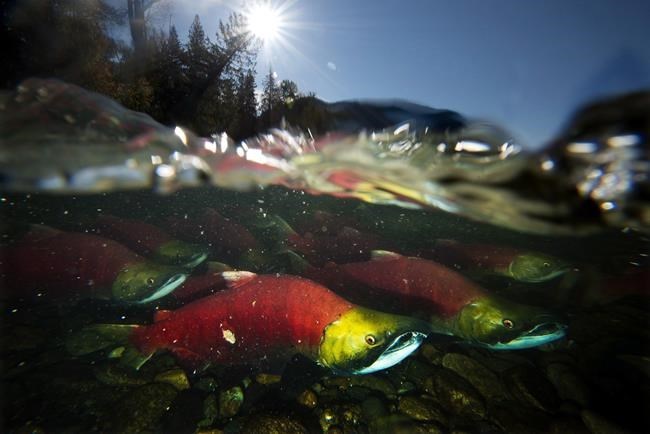OTTAWA — Record federal spending to try to save the Pacific salmon population marks the beginning of a new chapter that will give the species a fighting chance at survival, Fisheries Minister Bernadette Jordan says.
Jordan and Environment Minister Jonathan Wilkinson outlined the principles that will guide how $647.1 million announced in the last budget will be spent over the next five years.
The Pacific salmon population is drastically declining due to a combination of climate, habitat and harvesting pressures, the government said in a news release.
"A generation of Canadians have seen salmon populations decline, some up to 90 per cent in their lifetime," Jordan said during a teleconference on Tuesday.
"There is no quick fix and no one single solution to save this species. This will require patience and all hands on deck."
Salmon cannot be protected where and when it is most convenient, the species must be a clear priority across the region for years to come, she added.
The Pacific Salmon Strategy Initiative covers four key areas: conservation and stewardship, hatchery production, harvesting, and integrated management and collaboration.
The government said new policies and programs in each area will proceed in collaboration with a range of interests, including Indigenous Peoples and commercial and recreational fishers.
As part of the initiative, the federal government will contribute an additional $100 million to the $143-million Salmon Restoration and Innovation Fund, which was established with the B.C. government in 2019 to help rebuild habitat.
Many Pacific wild salmon are on the verge of collapse and bold, ambitious action is needed now to reverse the trend and give them a fighting chance at survival, Jordan said.
The federal government said it will also further integrate data on salmon, ecosystems and climate to support program decisions and in its approach to a new commercial harvest management plan in consultation with First Nations.
Addressing declines in the population will require flexibility because of the complex and lengthy reproductive cycle of Pacific salmon, which spans four to five years on average, it said.
Consultation with Indigenous groups, provincial and territorial governments, harvesters, academia, environmentalists and others will begin in the coming weeks.
Watershed Watch Salmon Society, a conservation organization dedicated to protecting Pacific wild salmon, has described the decline of salmon abundance over the past 40 years as a "slow-moving environmental disaster."
In a written overview of preliminary 2020 salmon returns last November, the society's fisheries adviser, Greg Taylor, wrote that Fraser sockeye saw their worst return in history.
Only two cycles or eight years ago, more than two million fish returned and that declined to what was expected to be fewer than 300,000 in 2020, he said.
While the massive Big Bar landslide in the Fraser River was a contributing factor, returns were also "brutally low" in tributaries of the Fraser that were not affected by the slide, he said.
Average highs and lows tend to balance out between species and rivers across the province each year, but 2020 saw dramatic and widespread drops in spawning salmon that he said could further speed the overall decline.
The Fisheries Department 2021 outlook released at the end of December projected low returns similar to 2020.
Watershed Watch's executive director, Aaron Hill, said he had a mixed reaction to the federal funding program.
"Overall, this is a positive step and if they spend the money wisely, they make wild salmon recovery the No. 1 priority," he said in an interview.
However, Hill said he still has some serious concerns about how the much-needed support will be rolled out and whether the money will be used in a strategic way to address the most acute problems.
There are "a couple dozen" endangered Pacific salmon runs that need specific and immediate action plans, he said, but no such plans have been announced.
Hill said he was pleased to hear Jordan say that hatcheries would be managed through a conservation lens.
Hatchery salmon can have a positive or negative effect on wild stocks depending on the situation, he said.
If a salmon run is extremely low, then the hatchery fish can act as a lifeline by breeding with wild stocks to prevent the run from being completely wiped out.
However, hatchery fish tend to be genetically inferior and can reduce the species' resilience in the long run. They can also out-compete wild stocks, he said.
"I think there's definitely the potential for these initiatives to do a lot of good for salmon," he said.
— By Amy Smart in Vancouver.
This report by The Canadian Press was first published June 8, 2021.
The Canadian Press
Note to readers: This is a corrected story. A previous version said Aaron Hill's first name as Adam.



